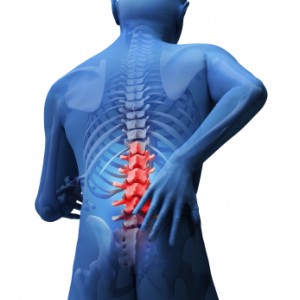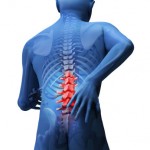General Information On Lower Back Pain

Some Interesting General Information On Lower Back Pain - Over 90% of people suffer from back pain during their lives
Here is some interesting general information on lower back pain by Dr Chad Patton from an article from the news site hometownannapolis.com
It is a good overall snapshot of some facts and figures about lower back pain in the USA today. The fact that is quite interesting is that back pain is the 2nd most common reason why patients visit the doctor.
Astounding!
General Information On Lower Back Pain
Each year $90 billion is spent on the treatment of low back pain in the United States. As you read this article, 15 percent of the population is reporting low back pain.
Roughly 90 percent will have at least one episode of low back pain in their lifetime, and it is the second-most common reason for patients to see a physician. Understanding it will help improve treatment and hopefully prevent future recurrences.
Doctors classify low back pain into two groups. Acute low back pain is defined as symptoms lasting less than three months. This may follow an injury from heavy lifting, for example, or may appear out of the blue. Symptoms are typically limited to the lower region, or lumbar spine, and can radiate outward along the waistline.
Pain can also radiate into the buttocks, hips and even the thighs. Bending and heavy lifting can exacerbate symptoms and are best avoided while symptomatic. Usually symptoms are limited to a few days but can persist for several weeks. Back pain lasting greater than three months is defined as chronic low back pain, which occurs in 10-20 percent of patients.
One of the difficulties in treating low back pain is trying to precisely identify the “pain generator.” Culprits include inflammation of the large spinal muscles and their bony attachments; arthritis in the joints of the spine; degeneration or breakdown of the intervertebral discs; a tear in the covering of the disc; problems with spinal alignment; and sometimes narrowing around the nerves, also called spinal stenosis.
Often, an X-ray and even an MRI of the lumbar spine can appear relatively normal despite severe pain, further clouding our understanding of back pain. The good news is that most low back pain will subside within the first two weeks. In fact, 50 percent of patients will have resolution of symptoms in the first two weeks and 80 percent within the first six weeks. For this reason, physicians will often wait six weeks before ordering X-rays or an MRI. Exceptions may be patients who have experienced a trauma such as a motor vehicle accident; have a history of cancer, fevers, or osteoporosis; are over the age of 50; or have atypical complaints such as numbness in the legs or pain at night.
More good news: less than 4 percent of patients with back pain require surgical treatment for their symptoms. There are many non-surgical options, and typical treatment may consist of over-the-counter medications such as ibuprofen, exercises, application of cold-packs, and one or two days maximum of rest. Good clinical studies have shown that patients who remain active have a shorter duration of symptoms. Of course, avoiding heavy lifting or high-impact activity is probably best avoided until symptoms improve.
So when do you opt for surgery? Usually it is after ALL other conservative avenues have been explored. It is advised you see AT LEAST 2 specialists if not more to make sure you have exhausted all options apart from back surgery. The specialists you might see would be either an orthopaedic surgeon or neurosurgeon.
The article goes on to talk more about lower back surgery:
Surgical treatment of low back pain is usually reserved for patients who also have associated pain from a pinched nerve, a problem with spinal alignment, infection of the spine and in some cases a fracture.
Depending on the diagnosis, surgery might include removing pressure from the nerves by removing arthritic bone and soft tissue, called a laminectomy, or in the case of a disc herniation, a discectomy. Occasionally, a spinal fusion is necessary, which involves the placement of screws and rods to allow healing of bone and stabilization of the spine.
Low back pain symptoms can vary by cause, severity and duration, all of which can unfortunately make the treatment of back pain difficult. If symptoms do not resolve on their own, then you should consider seeing your primary care physician. He or she may decide to order tests such as an X-ray or MRI if indicated.
So there is some basic general information on lower back pain. We often go into detail on new treatments or exercises for back pain relief, but sometimes it is good to take a step back and just look at the overall problem in general from the point of view of someone who has just sustained a back injury to give people a starting point into the things to think about when you have back pain.
Sometimes it is best to see the forest for the trees, and keep things simple.
We hope this helps, and suggest you use social media to pass the story on to friends that may need some information on lower back pain
You might also like:
Tags: back pain, back pain relief secrets, back pain relief tips, General Information On Lower Back Pain, Information On Lower Back Pain, Lower Back Pain, pain relief














